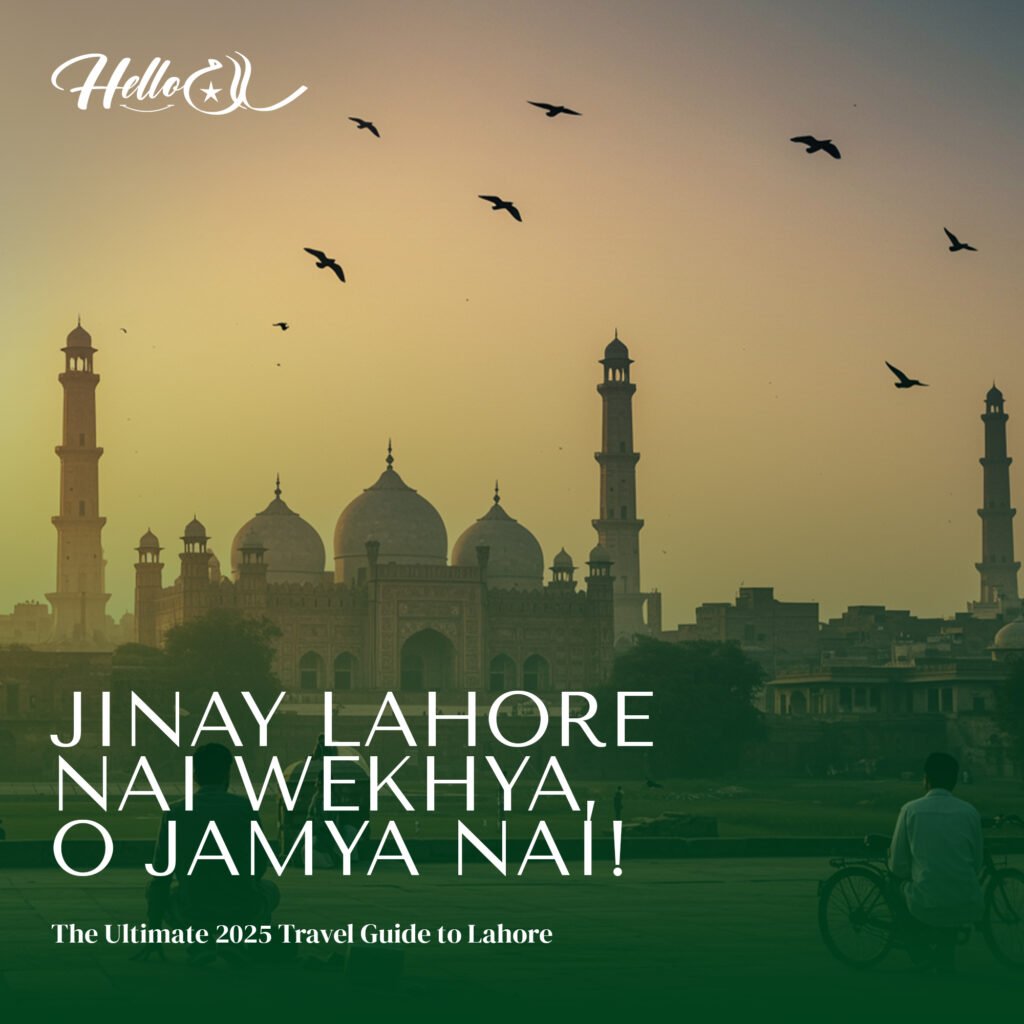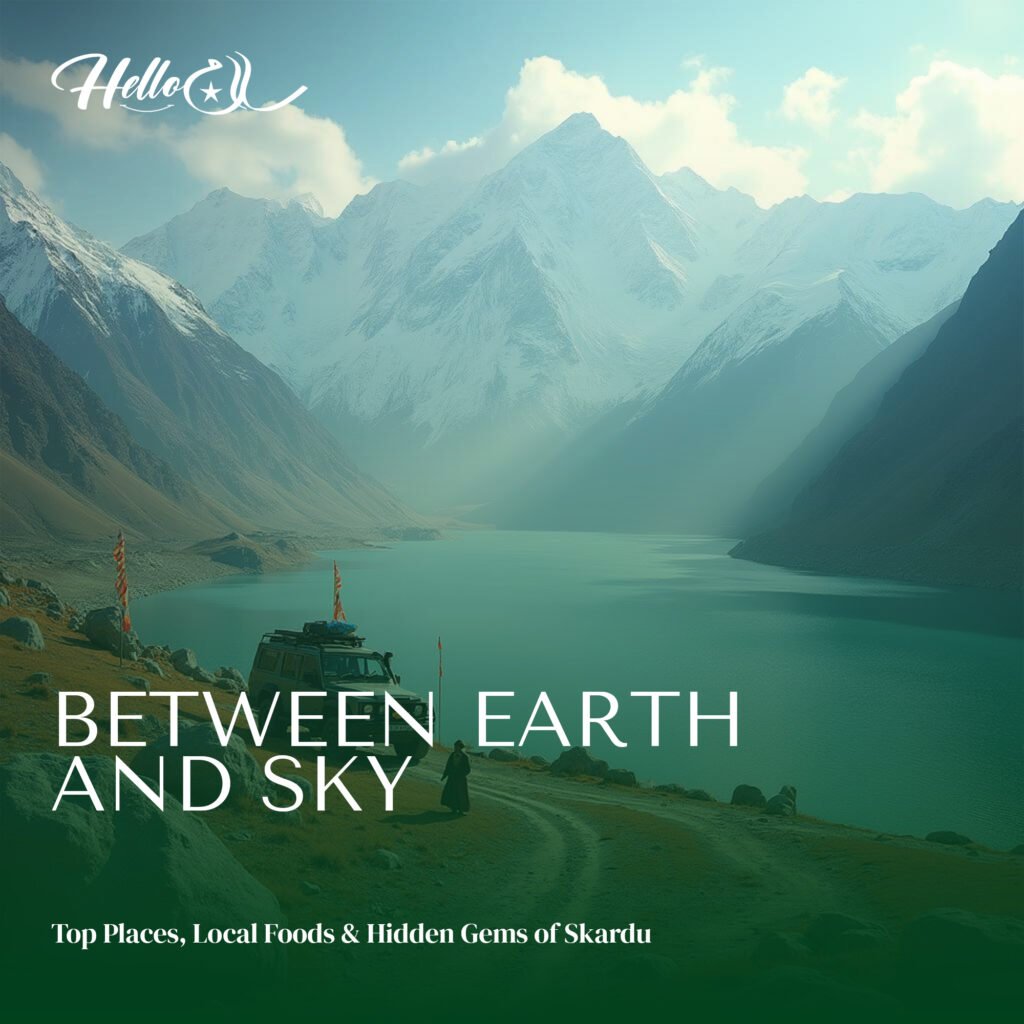Deosai Plains – World’s Second Highest Plateau Travel Guide
Ever imagined walking across clouds? The Deosai Plains, perched in northern Pakistan, offer just that feeling, endless meadows meeting a skyline of mountains, wildflowers dancing in the wind, and the silence of the high Himalayas wrapping around you. Known as the “Land of Giants”, this plateau is one of the highest on Earth and among Pakistan’s most breathtaking natural wonders.
In this Deosai Plains travel guide, you’ll discover everything: its exact height, wildlife, weather, location, camping tips, and the best time to visit. Whether you’re planning an adventure or simply curious about this hidden gem, here’s a complete breakdown of what makes Deosai truly extraordinary.

Deosai Plains Location, Height and Geography
Located between the Skardu and Astore districts of Gilgit Baltistan, Deosai Plains in Pakistan sit at an average altitude of 4,114 meters (13,497 ft). That makes them the second highest plateau in the world, right after the Tibetan Plateau.
Stretching across 3,000 square kilometers, this vast wilderness was declared a National Park in 1993 to protect the endangered Himalayan Brown Bear.
Key Facts
• Deosai Plains location: Gilgit Baltistan, northern Pakistan
• Height of Deosai Plains: 4,114 meters above sea level
• Access routes: Skardu (via Sadpara Lake) and Astore (via Chilam Chowki)
• Deosai Plains map: Shows proximity to Skardu, Astore, and Sheosar Lake
This untouched landscape offers a rare chance to experience high altitude nature in its purest form.
Flora, Fauna and Wildlife of Deosai
During summer, Deosai Plains flora transforms the plateau into a natural carpet of wildflowers. Over 200 plant species thrive here, feeding marmots, ibex, and brown bears.
Among the remarkable Deosai Plains animals are:
• Himalayan Brown Bear (symbol of the park)
• Himalayan ibex and snow leopard
• Golden marmots, red foxes, and migratory birds
Bara Pani and Kala Pani streams cut through the plateau, attracting wildlife and offering scenic camping points for adventurers.
According to WWF Pakistan field surveys, Deosai is one of Asia’s last natural sanctuaries for large alpine mammals, a strong reason why eco-tourism is crucial here.

Best Time to Visit Deosai Plains
The best time to visit Deosai Plains is from June to early September. During this period, snow melts, roads open, and the meadows burst into bloom.
From October to May, Deosai is covered in deep snow, with temperatures dropping below minus 20 degrees Celsius.
Deosai Plains Weather Overview
• June–July: 10–15°C daytime, pleasant for trekking
• August: Cooler nights, vibrant flora
• September: Crisp weather and fewer tourists
Always check the Deosai Plains weather forecast before traveling, as the conditions can change rapidly.
Reaching Deosai Plains – Routes and Directions
There are two main routes leading to Deosai Plains in Pakistan:
- Skardu Route: From Skardu city through Sadpara to Bara Pani (approximately 30 km)
- Astore Route: From Astore town through Chilam Chowki to Sheosar Lake (around 40 km)
Both routes require 4×4 vehicles, especially after rainfall. Jeep safaris and local guides can be hired easily in Skardu or Astore.
Distances
• Lahore to Deosai Plains: around 730 km (18–20 hours drive)
• Islamabad to Deosai: around 600 km (13–14 hours drive)
• Gilgit to Deosai Plains: around 170 km (6 hours drive)
Tip: Carry fuel, snacks, and warm clothing. Facilities are limited once inside the plateau.
Camping and Accommodation
Camping in Deosai is an experience like no other. Most travelers prefer Bara Pani or Sheosar Lake for overnight stays due to their beauty and accessibility.
• Deosai Plains camping: Bring your own tent and gear or join guided tours.
• Guest houses near Deosai: Available in Skardu and Astore for pre and post trip stays.
Nighttime unveils one of the clearest skies on Earth, ideal for stargazing and astrophotography.

Top Things to Do in Deosai
• Trek to Sheosar Lake and capture its mirror reflection of Nanga Parbat
• Spot Himalayan marmots basking under the sun
• Watch migratory birds at Bara Pani wetlands
• Enjoy night tenting in Deosai Plains and see the Milky Way
• Explore Kala Pani, known for its dark glacial water streams
Learn about other offbeat Pakistan travel gems on Hello Salam PK
Key Travel Tips
- Acclimatize before the trip to avoid altitude sickness
- Weatherproof gear is essential since the temperature drops sharply at night
- Respect wildlife, never feed or approach animals
- Avoid littering; Deosai is an eco-protected zone
- Stay connected and keep an offline Deosai Plains Google Map downloaded
Quick Reference Table
| Topic | Key Detail | Link |
| Location | Gilgit Baltistan, Pakistan | Google Maps |
| Height of Deosai Plains | 4,114 m (13,497 ft) | Wikipedia |
| Best Time to Visit | June to September | Rozefs Tourism |
| Camping Sites | Bara Pani, Sheosar Lake | Pakistan Travel Places |
| Major Attraction | Sheosar Lake, Himalayan Brown Bear | WWF Pakistan |
FAQs
What is Deosai Plains?
Deosai Plains is a high-altitude plateau in Gilgit Baltistan, Pakistan, and the world’s second highest plain, located at 4,114 m above sea level.
What animals live in Deosai Plains?
You’ll find Himalayan Brown Bears, marmots, ibex, foxes, snow leopards, and migratory birds.
How far is Deosai Plains from Skardu?
It’s around 30 km from Skardu, accessible by jeep through Sadpara Lake.
Can you camp in Deosai Plains?
Yes, Bara Pani and Sheosar Lake are popular for camping with clear night skies.
What is the best month to visit Deosai Plains?
July is ideal for flower blooms, warmer temperatures, and accessible routes.
Final Thoughts
The Deosai Plains redefine beauty and wilderness. Between its snow-covered peaks, colorful meadows, and crystal lakes, the plateau invites travelers to witness the untouched heart of Pakistan. Every step here feels sacred, a dance between earth and sky.
Whether you’re chasing stars, wildlife, or solitude, Deosai promises magic you’ll never forget.
Stay tuned with Hello Salam PK for more cultural insights.




